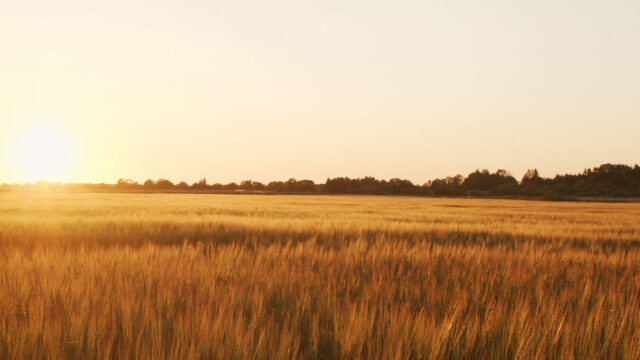Winter crops are agricultural crops that are sown in autumn and harvested in the summer of the following year. Which crops to sow depends on agronomic factors such as crop rotations and soil conditions, the availability of labor and machinery, economic factors such as input costs and policy incentives or restrictions. Weather conditions affect the quantity and quality of harvests and the resulting supply and demand guide prices on the markets.

The yield forecast for 2023 goes downward
This year many parts of Europe have faced worsened yield expectations for summer crops due to drier-than-usual conditions. On the other hand, western parts of Bulgaria and Romania, Slovenia, Croatia, and Hungary suffered from rainfall surplus which affected harvesting and reduced grain quality. MARS (Monitoring Agricultural ResourceS) considered the yield forecasts for all crops grown on EU level to go downward.
In the future winter crops could become more important especially in Central European cropping systems as the productivity of spring crops decreases due to changes in climatic conditions during the next decades. By shifting from spring to autumn sowing farmers can establish a strategy to combat terminal drought in areas that are more sensitive to agro-climatic changes. Autumn-sowing can also lead to improved yield due to higher amounts of intercepted solar radiation.
What to sow
Typical winter crops in the EU are wheat, rapeseed, rye and triticale. Barley is common in both its winter and spring varieties.
As always when making decisions on which annual crops to sow, farmers consider the overall situation and specific factors that affect the yield, for example, crop rotations and soil conditions. These factors have a major impact on the annual production of specific crops.
For example winter wheat is grown in high-quality soils. The most common pre-crops for winter wheat are rapeseed, maize, sugarbeet and wheat. Winter wheat monoculture is also possible but must be broken every 4th year. Winter barley is also an important crop on many farms as it offers an early entry for oilseed rape and a source of grain and straw on livestock farms.
Other factors to consider when deciding which winter crop to sow are the current cost of seeds and policy incentives or restrictions, which vary from one country to another.
When to sow
Every country and region has their own optimal time frame for sowing winter crops. The right time to sow depends on the area and its typical weather conditions. In some countries the sowing has already started but for most the optimal season for winter crops extends from the end of September to early November.
If sowing starts later than what is the ideal timing for the specific area it affects the maximum yield. Crops sown from December onwards usually suffer from poor or slow growth and yield is usually not optimal. Sowing too early can bring its own problems, such as too dry soil and diseases existing in the old stubbles.
Cover crops offer a way to enrich the soil
The soil is the most important asset any farmer has. Cover crops offer a way to prevent soil loss, develop biota and rejuvenate biodiversity of the soil. Cover crops are also proven to be a good way to increase yield.
Cover crop refers to any vegetation grown outside of the growing season or apart from the main crops to provide cover that protects the soil. Cover crops are mainly grown after wheat, barley, silage maize or sunflower. The most popular species of cover crops are ryegrasses, mustards, clovers, vetch, oats, phacelia and rye. Usually cover crops are sown after the harvest of the main crop.
Cover crop cultivation varies according to country. For example in France farmers are generally well informed about the benefits of cover crops, which are most often sowed after wheat and barley harvest.
Despite their benefits, sowing cover crops gain popularity fairly slowly. Most European farmers grow cover crops mainly because of existing policies or because cultivating cover crops is mandatory in the region. Agronomic or environmental motives for growing cover crops play a fairly small role. Many farmers indicate that they would adopt cover crops in their cycle if additional subsidies were available.
When sowing cover crops, a small seed box (linkki) is a recommended tool that can be used in many ways. By using a small seed box you can seed grass, such as hayseed, under the main crop with the same driving time. Small seed box can be used also for seeding cover crops after harvesting. Winter crops need small amounts of fertilizing in autumn which can also be done with a small seed box.
Our experts will help you choose the right tools
If you are making plans to sow winter crops or cover crops and are lacking a trustworthy partner for the job, look no further. Junkkari has delivered agricultural machinery to farmers around the world for three generations.